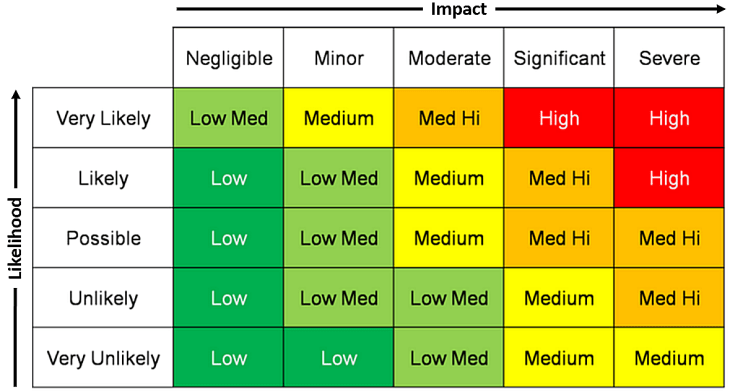INTRODUCTION
Biology misconceptions are commonly based on scientific facts that have no basis in actual scientific proofs. Biology misconceptions might arise because of varied teaching styles and prior knowledge of students (Halim et. al., 2018). Misconceptions related to biology arise as a result of common half beliefs by individuals or young kids. The chosen biological misconception for this report is plants obtain their energy from the food they take in from the soil. In this report, the discussion revolves around the difference between facts and misconceptions that are related to whether or not plants obtain their energy from food that they take from soil which may be a mechanism of photosynthesis. The report formulates the understanding which is related to the perspective of an educator or teacher that they must take involvement with a student or young kids to eradicate false information or misconception that they develop due to lack of knowledge and guidance. The discussion signifies the ways and strategy which is used by a teacher to improve knowledge and eradicate misconceptions that arise among students or young kids in a classroom setting (Gobec, and Strgar, 2019).
MAIN BODY
TASK 1: Year group and curriculum statement
The process of photosynthesis is taught to young kids in sixth and seventh grade. As an educator, the major responsibility is to impart theoretical and practical-based knowledge about photosynthesis along with scientific facts, it helps students to enhance their knowledge about misconceptions regarding photosynthesis (Duda et. al., 2021). It is also important to teach young kids with the help of laboratory practicals that support learning realistically. It develops knowledge among students so that they can easily interrelate and understand the scientific facts related to photosynthesis. However, there are lots of misconceptions about photosynthesis, including the idea that plants obtain their food from the root parts, but according to scientific facts and evidence-based knowledge, it is invalid. As a teacher, it is essential to make students acknowledge plants' complex structures and functions through which they make their food with the help of sunlight. Therefore, sixth and seventh-grade students usually formulate misconceptions regarding the mechanism and process related to scientific approaches. As an educator, it is a responsibility to eliminate such misconceptions or false knowledge with a theoretical approach or use laboratory work that declines such kind of irrelevant information, i.e., plants obtain energy from food that they get from the soil (Kirmizigul, and Kizilay, 2020).
Apart from the above, a curriculum approach is also required in order to promote knowledge among students that is proportional to scientific learning. The major plot that is put within students is self-reading, understanding the process of food and water transportation through the model, practical lab work, and many more that act as a precursor to foster information among students or young adults regarding misconceptions. When students struggle with complex topics, they often search for help online, sometimes even looking for someone to do my assignment to ensure they get it right.
TASK 2: How will you teach it? What starting questions and context will you use?
As a teacher, a genuine role is played in order to eliminate such hypothesis which is developed by a student regarding any topic. In this, plants obtain energy from food that they take from the soil, which acts as a common misconception that arises due to a lack of knowledge and improper guidance. With this, it is essential to teach them about the fact which is configured by using a diagram, scientific model, visual approach, using poster and ray diagram which is useful to teach the student or young kid about plants that they how to obtain food and other involved processes. It plays a vital role in eradicating the misconception that students formulate. Therefore, the initial question is started with plant structure and function and after that provides them information that is well associated with energy formation with the inclusion of xylem and phloem. Additionally, include the role of sunlight and its effect (Saka, 2019).
Moreover, the starting question is generally focusing on plant morphology and then anatomy (Which are the skills required for teachers to identify their student’s misconceptions? 2017). Ask students about characteristics and mechanisms played by plants to survive and then provide them with accurate knowledge to eliminate such misconceptions. The main context used by a teacher to increase knowledge among students by using real plants where students understand the process correctly and recognize the morphological part and their function as well as use the transverse section of the plant part to demonstrate the process of energy formation and assimilation (Uhl, Sripathi, Meir, Merrill, Urban-Lurain, and Haudek, 2021).
TASK 3: How students learn it with activities and aspects of 5E. Including task sheets, practical tasks, risk assessment, and student management plans.
Young kids will be able to grasp knowledge and concepts about photosynthesis through active participation. As an educator, it is important to put new knowledge imparts to young kids by putting their knowledge and skills into practice. Therefore, to ensure that all misconceptions related to photosynthesis are clear, it is critical to execute practical learning such as laboratory practicals, using live examples, and other activities such as drawing and painting for enhancing the knowledge of young kids about the process of photosynthesis. Educators should implement the 5E model in a classroom setting for helping the kids to analyze and interpret their learning during the conduction of this activity (BOZDAĞ, and Gökçe, 2019).
The activity is selected for students, help to foster knowledge regarding the morphology and anatomy of the plant by using the model of the plant that works as a simulator and shows the overall process of energy formation to elimination.
Engage: The bridge between facts and misconceptions can be masked through practicing active communication and conducting activities for the enhancement of knowledge. In this, the plant is shared with the student which helps them to gain and understand the sequence and process of energy and transportation within plants.
Explore: It is critical to acknowledge that children learn better in a visual environment. Therefore, they should be allowed to explore facts related to plants and the source through which they obtain energy for themselves. The plant model help student explore the plant's structure and function which build knowledge.
Explain: A thorough explanation should be given to young kids for enhancing their level of understanding about the energy sources in plants. Therefore, educators need to ensure the usage of correct words and eliminate the use of the verbal statement that could lead to misconceptions (Tóth, Oukarroum, and Schansker, 2020). As a teacher, after reviewing and understanding the plant model, a narrative part is given which includes information that helps to remove the misconception from the student's mind.
Elaboration: The identification of misconceptions should be followed by an elaborate explanation to eliminate the possibility of any potential doubts in minds of children. Furthermore, physical models should be used in a classroom for the internalization of concepts related to photosynthesis.
Evaluate: Educators should make sure to evaluate the performance and understanding of students at each point in a classroom to avoid the association of the photosynthesis process with any possible myth.
Therefore, when the information is abbreviated, it is analyzed that a science inquiry test or quiz is also an essential approach that is underpinned to explore and demonstrate the plant mechanism. The logical question is well prepared and student are divided into two groups then such quiz is played that help the student to keep a better understanding of what is associated with plant and their mechanism which is used to transport (Xylem and phloem), conserve energy (photosynthesis), the energy source for plants (Starch) and so on.
Task sheets should be designed by educators for young kids in sixth and seventh grades to ensure that they are thorough with their concepts about photosynthesis. Educators should design an activity for a better understanding of photosynthesis in young kids. This can be achieved through the use of ping-pong balls, each representing sunlight, water, oxygen, and carbon dioxide (Bellenger, Darnajoux, Zhang, and Kraepiel, 2020).
Task sheet of questions for misconception and recording of error:
|
Misconception/Error(before activity) |
Suggested intervention(after activity) |
|
Do you have an idea about the activity plan? |
What did you learn from the activity? |
|
What is the purpose of the activity? |
Did desired outcome be accomplished? |
|
Any idea about the roots and plants? |
What did you learn from the activity? |
A risk assessment should also be conducted which should include interviewing kids about their level of understanding of myths and facts associated with the process of photosynthesis (Duda, Wahyuni, and Setyawan, 2020). The use of RAG rating will be used for the identification of risk associated with assigning the topic. A student management plan was designed for the kids to help educators identify the level of understanding of this particular biological misconception. Student management plans for young kids will consist of open and close-ended questions for educators to identify which part of the process of photosynthesis was clear and which one was not (Schizas, Papatheodorou, Vezagkou, and Stamou, 2020). In addition, the other alternative is also used rather than the Risk assessment which is PSA (Problem-solving assessment). It helps to evaluate the current condition and apply models and theories to resolve the issue.

Figure 1 RAG rating.
Source: RAG rating, 2019 [online] available through: https://riskacademy.blog/finally-an-alternative-to-risk-matrices/
Student management plan:
|
Open-ended questions |
Close-ended questions |
|
1: What is photosynthesis? |
1: Explain the critical Role of chlorophyll in plants? |
|
2: Where do plants derive their energy from? · Roots · sunlight · humans · wind |
2: What is the need for energy in plants? |
|
3: What do plants produce during respiration? · Carbon dioxide · glucose · sunlight · water |
3: What is the color of chlorophyll? |
|
4: Where is energy produced in plants? · Chloroplasts · leaves · roots · stem. |
4: Name 3 critical things required for photosynthesis. |
TASK 4: How will students know they have the right ideas? How will they elaborate on what they have learned?
As a teacher, there is a need to provide evidence-based information that can be effective to influence them that they are having some misconception about the obtaining energy which plants get from the process of photosynthesis. Here, the student has a misconception that plants are getting energy from food that is taken from the soil. As a teacher, it is hard to make their influence by providing theoretical knowledge or just by teaching them. There is a need to influence and convince them about this misconception by providing proper evidence. This may include educational books, magazines, and other sources where information related to this topic can be explained properly. Misconceptions related to plants are easily found in science textbooks, encyclopedias, and journals. In this, there is a need to ask some questions that they have learned (Han-Tosunoglu, and Lederman, 2021). There is also a need to take some formative questions which can be effective in response to the learned topic and can help to evaluate what students are learning regarding the present topic (Morris, 2018).
As a teacher, there is a need to be formative through proper explanation with proper diagrams and images which can help to show proper ideas about relevant information. Providing some form and asking them to explain learning can be effective to assess them formatively. After analyzing the formative form, if a student doesn’t change their ideas, then there is a need to use some other techniques where practical teaching can be more effective which are associated with convincing and collecting information on a practical basis. This can help in learning more effectively and help to change their ideas. There can be another technique where it needs to first identify the sources that give rise to these misconceptions in a classroom setting. The identification of misconceptions should be followed by allowing students to bring forward their misconceptions in a classroom (Boyacıoğlu, 2021). This will help eliminate any potential doubts in the minds of other fellow students. This process should be followed by allowing students to test their misconceptions. Such as in this case, they should be allowed to perform their experiments and predictions related to photosynthesis. The children should be given a chance to explore their models to ensure proper anticipation of concepts in a classroom (How Do I Get My Students Over Their Alternative Conceptions (Misconceptions) for Learning? 2015).
Related Samples: Cellular and Molecular Biology of Cancer
TASK 5: How will you assess their learning summatively?
There is a need to assess student learning which may include a clear concept about the producing energy in the plant through the process of photosynthesis. There is a need to take some tests where it can help to identify their learning which is associated with improving ideas about photosynthesis. Here, a test can be a process where different questions are asked by them about relevant topics and related parts (Ceylan, and Yiğit, 2018). There is a need to ask some questions which can allow clearing the concept of photosynthesis. These questions are below:
- What is photosynthesis? (4marks)
- What is the role of soil in the process of photosynthesis? (2marks)
- What is the importance of sunlight in photosynthesis? (6marks)
- What is the role of water in the photosynthesis process? (2marks)
- Can photosynthesis occur at night? (1marks)
Answering these questions correctly can enable students to get assigned marks for that questions. Marking criteria should also consider that can help in performing well and providing answers accordingly. This can also help point performing well and allow to provide better information and ideas about photosynthesis which can help to provide a positive response and provide ideas about getting high marks that represent their learning and knowledge which are asked in the summative paper (LinTang et. al., 2019).
CONCLUSION
From the above discussion, it can be concluded that many students have some misconceptions about getting energy through food that is taken from the soil. Here, plants do not take up all the necessary substances from roots. Furthermore, they do not rely solely on the absorption of nutrients for the production of food that leads to providing them energy. It is critical to address the potential sources of misconceptions related to photosynthesis, or the myth that plants take all of their required nutrients from roots. These scientific principles should be made clear in the minds of students through the implementation of a systematic framework. Educators have to ensure that the concepts related to this particular topic are clear in the minds of students, as it will enable students to become active learners, instead of being passive observers in a classroom. In this, there is a discussion about the curriculum statement about teaching. There is also discussion about the teaching techniques through asking questions. It also includes an aspect of 5E’s and includes a task sheet with a question. There is also discussion about how the student has the right ideas and they can learn them. A grammar checker can help ensure clarity in conveying these concepts effectively in written form.
REFERENCES
Books and Journals
Bellenger, J.P., Darnajoux, R., Zhang, X. and Kraepiel, A.M.L., (2020). Biological nitrogen fixation by alternative nitrogenases in terrestrial ecosystems: a review. Biogeochemistry, 149(1), pp.53-73.
Boyacıoğlu, Z., (2021). A Comparative Analysis of Selected Biology Textbooks Used in Turkey, Focusing on Genetics Chapters and Their Inclusion of Nature of Science (Doctoral dissertation, Bilkent Universitesi (Turkey)).
BOZDAĞ, H.C. and Gökçe, O.K., (2019). Determination of the knowledge awareness and misconceptions of sixth grade students about the cell with four tier test. Adıyaman University Journal of Educational Sciences, 9(1), pp.199-225.
Ceylan, Ö. and Yiğit, E.A., (2018). Analyzing the effect of concept cartoon usage on students’ cognitive structures developments and science achievements through flow maps. Science Education International, 29(4).
Duda, H.J., Wahyuni, F.R.E. and Setyawan, A.E., (2020), April. Misconception of the biology education students on the concepts of fermentation. In Journal of Physics: Conference Series (Vol. 1521, No. 4, p. 042006). IOP Publishing.
Duda, H.J., Wibowo, D.C., Wahyuni, F.R.E., Setyawan, A.E. and Subekti, M.R., (2021). Examines the misconceptions of students biology education: health biotechnology. Pedagogika, 142(2), pp.182-199.
Gobec, K. and Strgar, J., (2019). Effectiveness of the Conceptual Change Method on Understanding Plant Mass Increase. Journal of Baltic Science Education, 18(4), pp.569-582.
Halim, A.S., Finkenstaedt-Quinn, S.A., Olsen, L.J., Gere, A.R. and Shultz, G.V., (2018). Identifying and remediating student misconceptions in introductory biology via writing-to-learn assignments and peer review. CBE—Life Sciences Education, 17(2), p.ar28.
Han-Tosunoglu, C. and Lederman, N.G., (2021). Developing an instrument to assess pedagogical content knowledge for biological socioscientific issues. Teaching and Teacher Education, 97, p.103217.
Kirmizigul, A.S. and Kizilay, E., (2020). Investigation of the Pre-Service Science Teachers' Perceptions of Protists. Pedagogical Research, 5(4).
Lin, X.F., Tang, D., Lin, X., Liang, Z.M. and Tsai, C.C., (2019). An exploration of primary school students’ perceived learning practices and associated self-efficacies regarding mobile-assisted seamless science learning. International Journal of Science Education, 41(18), pp.2675-2695.
Morris, J.Z., (2018), March. Misconceptions inherent in the substance ontology approach to assigning moral status: A reply to Patrick Lee, Christopher Tollefsen, and Robert George. In The Journal of Medicine and Philosophy: A Forum for Bioethics and Philosophy of Medicine (Vol. 43, No. 2, pp. 159-186). US: Oxford University Press.
Saka, A., (2019). Development of Preservice Biology Teachers' Skills in the Causal Process Concerning Photosynthesis. Journal of Education and Training Studies, 7(4), pp.51-62.
Schizas, D., Papatheodorou, E., Vezagkou, T. and Stamou, G., (2020). Unravelling the holistic nature of ecosystems: biology teachers’ conceptions of ecosystem borders. International Journal of Science Education, 42(11), pp.1759-1778.
Tóth, S.Z., Oukarroum, A. and Schansker, G., (2020). Probing the photosynthetic apparatus noninvasively in the laboratory of Reto Strasser in the countryside of Geneva between 2001 and 2009. Photosynthetica, 58(SPECIA), pp.560-572.
Uhl, J.D., Sripathi, K.N., Meir, E., Merrill, J., Urban-Lurain, M. and Haudek, K.C., (2021). Automated writing assessments measure undergraduate learning after completion of a computer-based cellular respiration tutorial. CBE—Life Sciences Education, 20(3), p.ar33.
Online
Which are the skills required for teachers to identify their student’s misconceptions? 2017 [Online] Available through: https://www.researchgate.net/post/Which-are-the-skills-required-for-teachers-to-identify-their-students-misconceptions
How Do I Get My Students Over Their Alternative Conceptions (Misconceptions) for Learning? 2015 [Online] Available through: https://www.apa.org/education-career/k12/misconceptions



























